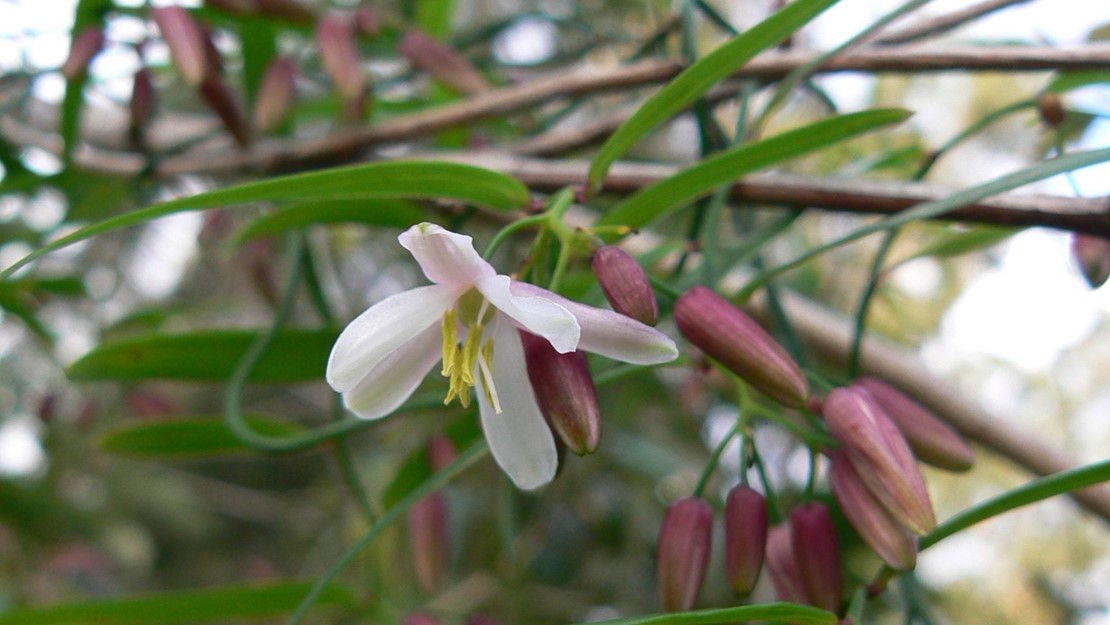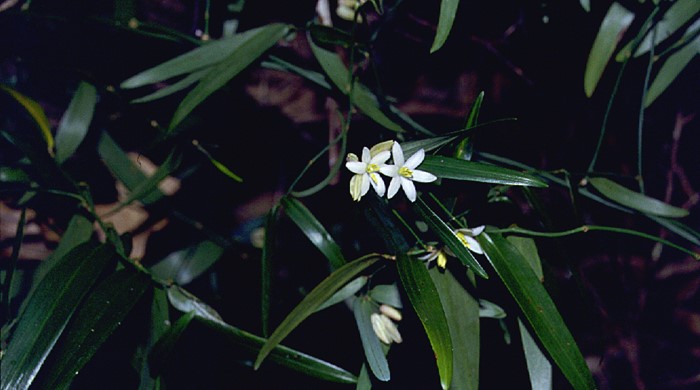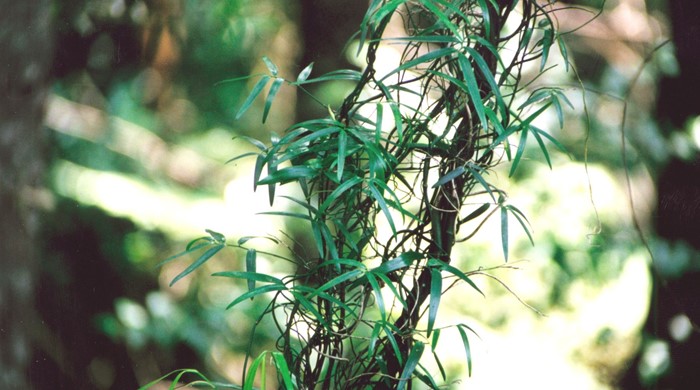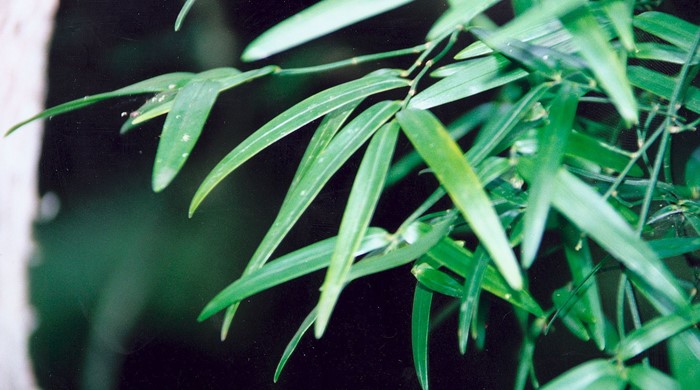Geitonoplesium cymosum
Scrambling lily
Family: Philesiaceae
Origin: Oceania

Regional Pest Management Plan (RPMP) status
- Whole region — Eradication
- Hauraki Gulf Controlled Area Notice pest
General description
Evergreen perennial climber < 12 m. Stems are green, wiry and self-supporting, reaching low branches before winding around the host plant. Leaves have a raised central vein and are dull green, stiff, < 8 x 1 cm and absent from stems in full shade. Flowers are white/purplish-green with clusters of bright yellow anthers. Fruit is spherical, < 1 cm in diameter and green turning black.
What you need to know
To help protect our environment:
- You must not breed, distribute, release or sell scrambling lily within the Auckland region.
- You must not plant scrambling lily within the Auckland region.
Auckland Council will control scrambling lily at all sites where it is known to occur.
If you see scrambling lily anywhere in the Auckland region, please report it to Auckland Council at pestfree@aucklandcouncil.govt.nz.
Habitats
Forest, woodlands, potentially riparian margins.
Dispersal
Seeds dispersed by birds. Vegetative spread from suckering and rhizome fragments. Human-mediated dispersal through dumping of garden waste.
Impact on environment
Forms dense infestations and strangles host plants.
Control
Recommended approaches
Do not attempt to undertake control of this species. Please report to Auckland Council.
Caution: When using any herbicide or pesticide please read the label thoroughly to ensure that all instructions and safety requirements are followed.






